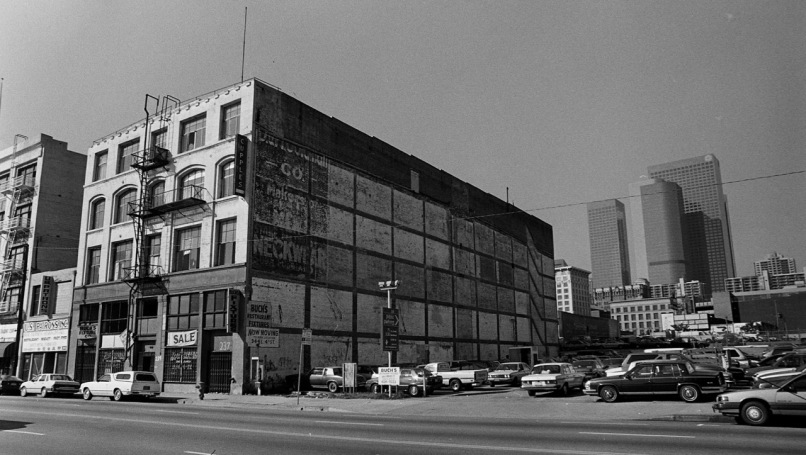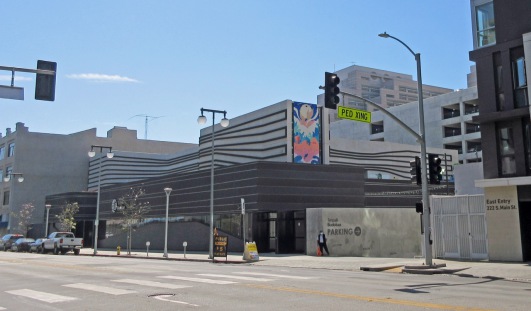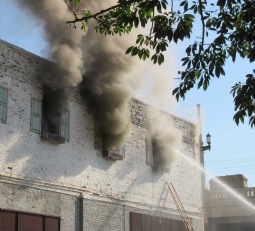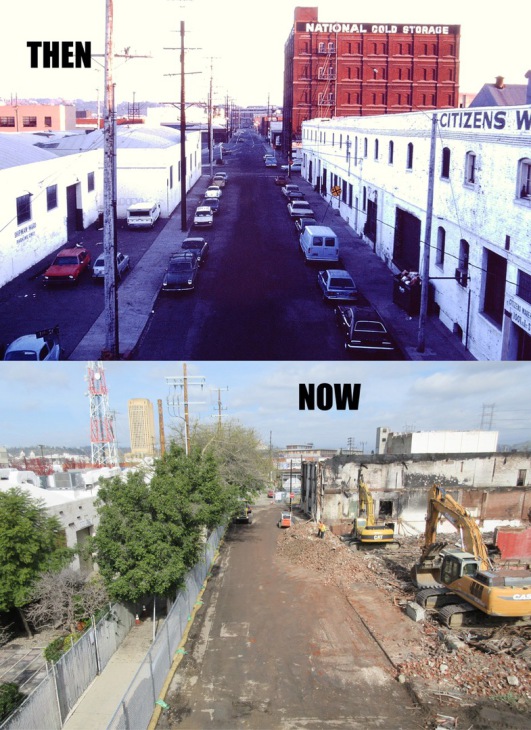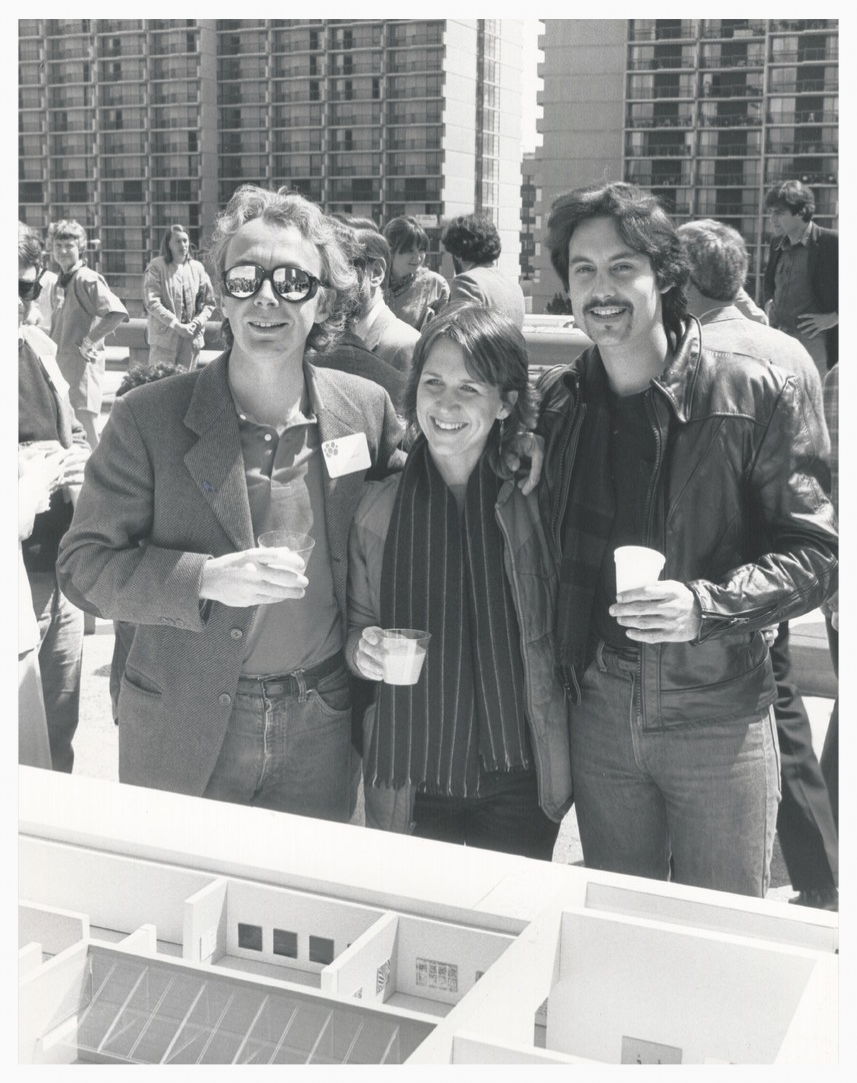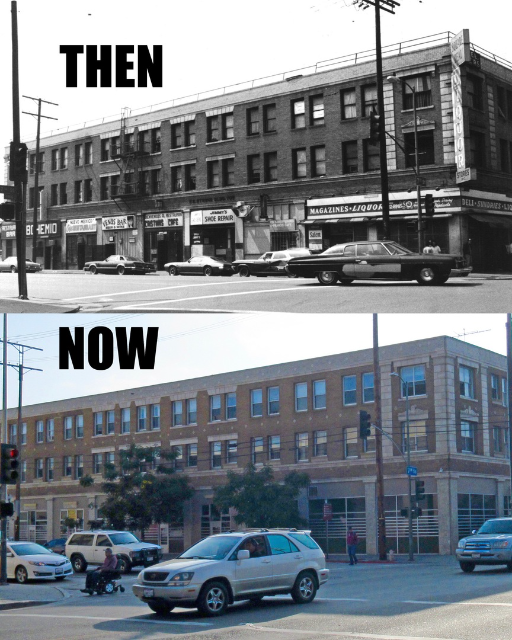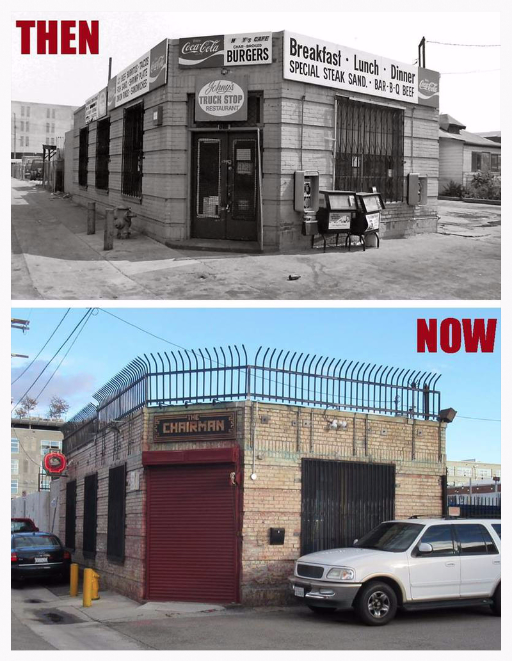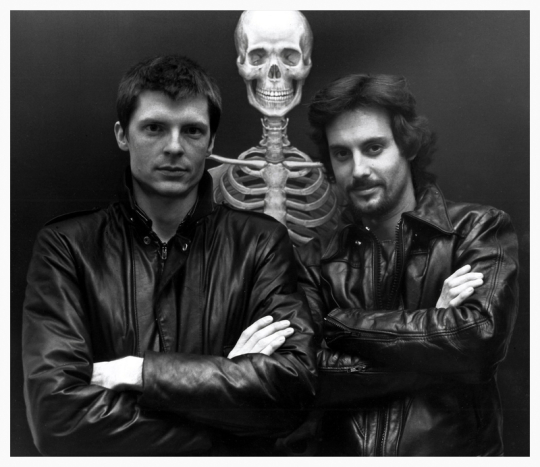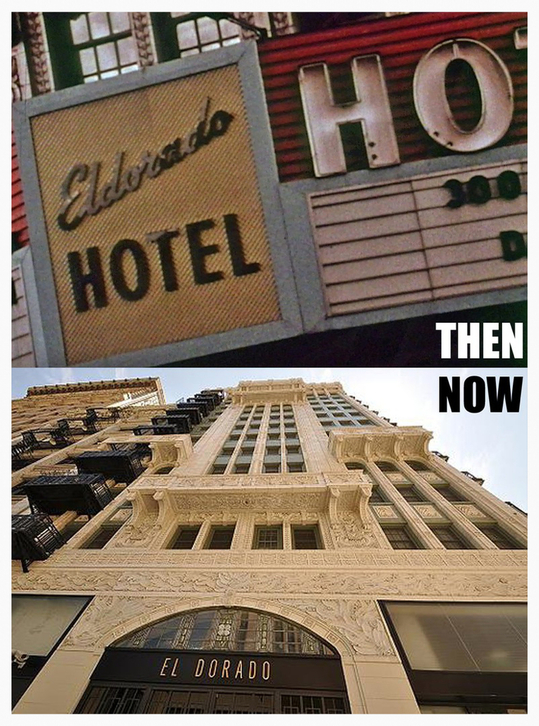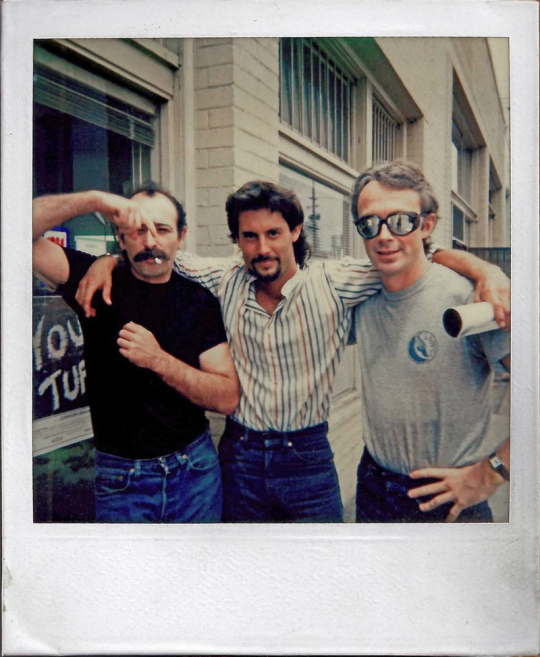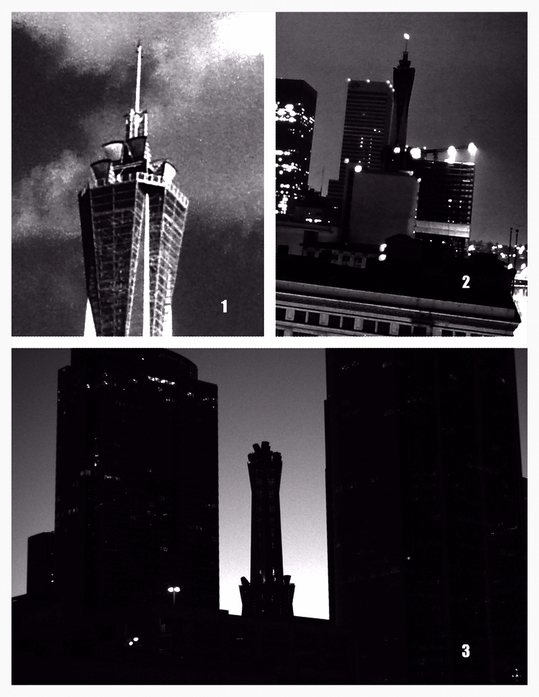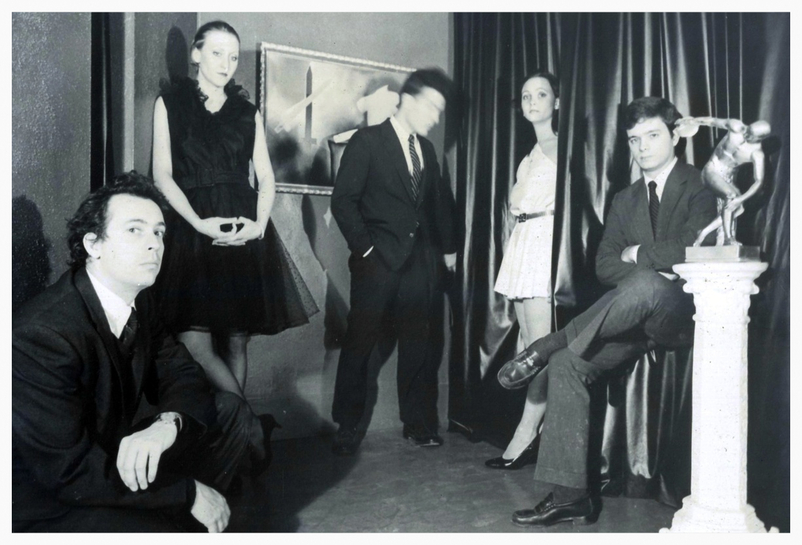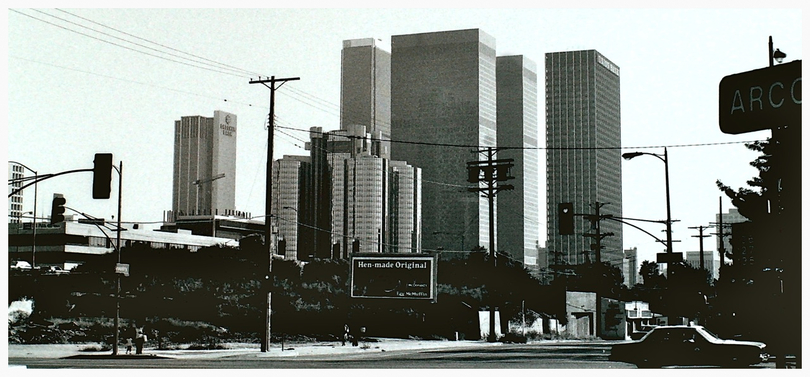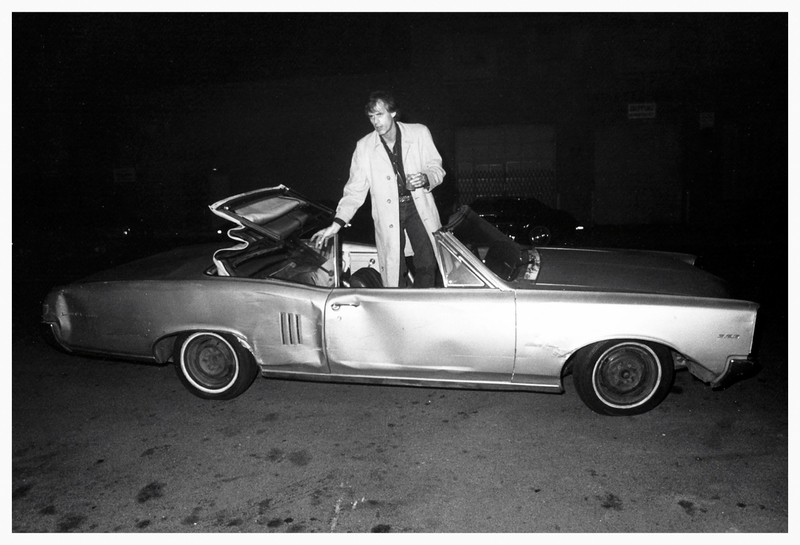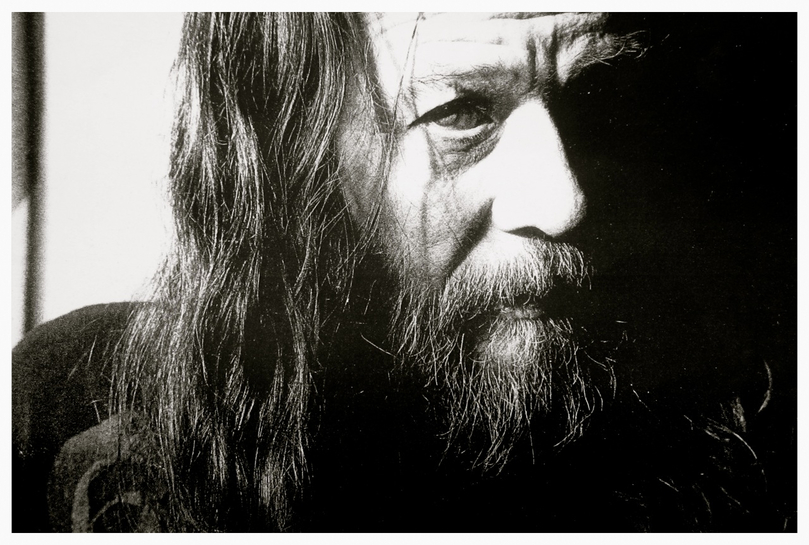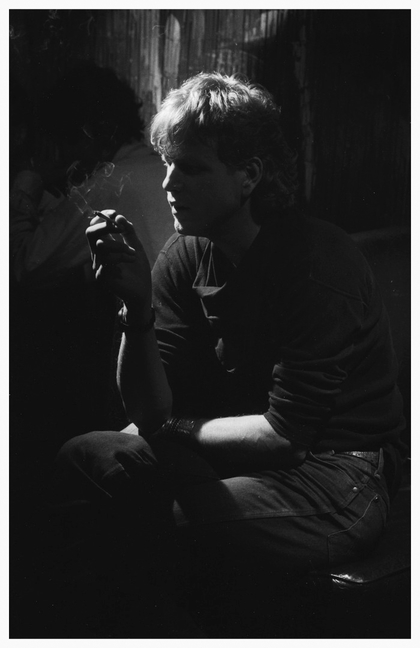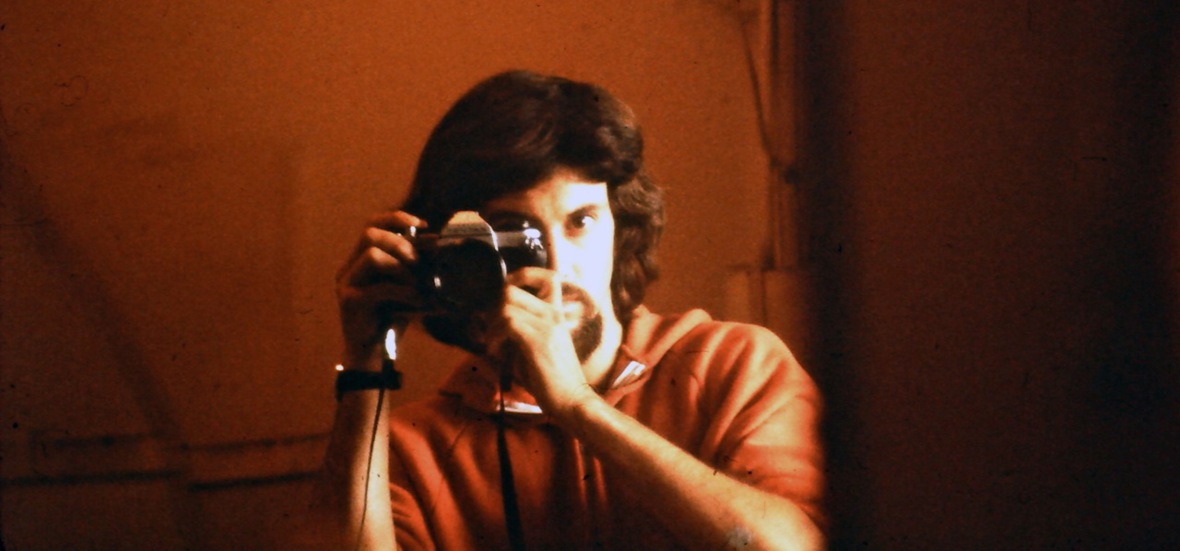

Snapshots
Lost Landmark
The 239 S. Los Angeles St. building was home to several Young Turks in the 1970s and '80s.
While Buch's sold restaurant fixtures on the ground floor, landlord Susie Iwasaki rented the three floors above to artists such as sculptors James Croak and Jon Peterson, photographer Monique Safford, and painter Judith Simonian. The building was demolished in 1989.
In the 1970s, the Citizens Warehouse on Center Street (near the 1st Street bridge) was one of the first buildings transformed into artists' lofts (illegally) in what is now the Downtown Arts District.
In addtion to providing studios for artists such as Marc Kreisel, Gary Lloyd and Carlton Davis, the Citizens Warehouse was also home to the Art Dock, a drive-by gallery run by Davis and featuring local talent.
A fire of suspicious origin destroyed the historic building on Nov. 10, 2018, and it is now in the process of being razed.
A gentleman grooves to his own tune in the intersection of 7th & Central in an excerpt from "Young Turks."
With well-portioned, inexpensive breakfasts, Johny's Truck Stop kept many an artist from starving back in the 1970s and '80s, when most of the industrial buildings in the area were either vacant or had been converted into gigantic creative spaces that leased for pennies a square foot. The area — frequented by truck drivers and warehouse workers by day — was known as Hooker Alley by night, populated as it was by prostitutes and drug dealers. Located at 5th & Colyton, the building that housed Johny's now sits amid trendy outdoor eateries — such as Urth Café — pricey condos and chic boutiques. The building is soon to be a Chinese take-out stand called The Chairman.
The corner of 5th & Wall Street in downtown Los Angeles was the home of the original Hard Rock Café, "the working man's bar," in the late 1970s and early '80s. Now the Green Apple Market, it is located at the heart of the city's Skid Row, an area that, while still populated by homeless people and the missions that serve them, is nonetheless going through a transition as many older buildings are being repurposed into lofts.
In 1981, performance artists Alex Grey and Stephen Seemayer — the director of "Young Turks" — met in New York and discovered that each was exploring similar themes of human identity amid technological evolution. Their paths have diverged, although each has continued to produce paintings and other works. Grey is based in Wappinger, NY, where he founded the Chapel of Sacred Mirrors, "a sanctuary for seeing ourselves, the world, and our cosmos as reflections of the Divine." Seemayer lives in Los Angeles and is at work on another documentary, "Tales of the American."
In 1981, the El Dorado Hotel on Spring Street near 4th was one of downtown L.A.'s many rundown flophouses. It was where artist Richard Newton did performances about loneliness, alcoholism and desperation by checking into a room and allowing audience members to glimpse his life inside through the chained door.
Today, the El Dorado is a gleaming tower of luxury condos at the heart of L.A.'s "Historic Core."
Three of the artists profiled in "Young Turks" — Marc Kreisel, Stephen Seemayer and Jon Peterson — after breakfast at Vickman's near 8th & Central in 1981. A poster for the Downtown Drive-In screening of Seemayer's documentary film hangs in the window of the popular Market District eatery, which was open from 3 a.m. to 3 p.m. every day serving truck drivers and others who worked at the L.A. Wholesale Produce Market.
Since it was built in 1961 as a switching station for Pac Bell, the tower near 5th & Grand has been a signature of the downtown L.A. skyline. In 1977-1981, when "Young Turks" was filmed, the iconic shape was clear and visible from all around. Today, it's still there, but it has been dwarfed by high-rises of the financial district.
The punk band Party Boys (from left, James Duck, Gillean McLeod, Donald Dunham, Marnie Weber and Fred Arbegast) lived in a loft in L.A.'s produce market district near 7th & Central in the late 1970s and early '80s.
This was the downtown L.A. of the "Young Turks," seen from 1st & Beaudry circa 1980. The twin towers of Atlantic Richfield featured the nonprofit Arco Center for Visual Art, where some of the best contemporary artists exhibited their work.
Artist Gary Lloyd arrives at the Golden Turkey Awards in style. The Golden Turkeys was a send-up of art stardom hosted by Al's Bar owner Marc Kreisel in 1981. The faux awards ceremony roasted the "Young Turks."
